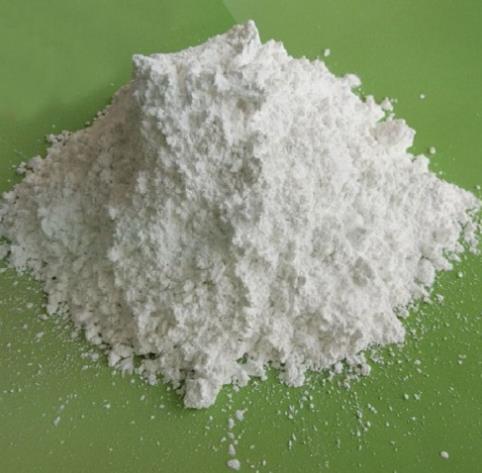2-Hydroxypropyl Methacrylate: A Versatile Monomer in Modern Chemistry
Oct 28,2024
2-Hydroxypropyl Methacrylate has gained significant attention within the realm of polymer chemistry. is increasingly becoming a staple in a variety of industrial and research applications. 2-HYDROXYPROPYL METHACRYLATE’s unique properties, such as its reactive methacrylate group and hydrophilic hydroxy group, make it an indispensable component in the synthesis of polymers and copolymers, serving as a bridge between organic chemistry and material science.

Figure 1 Characteristics of 2-Hydroxypropyl methacrylate
What is 2-Hydroxypropyl Methacrylate?
2-Hydroxypropyl Methacrylate is a methacrylate monomer derived from methacrylic acid. It features a hydroxyl group attached to a propyl chain, which is connected to a methacrylate ester. This structure gives 2-HYDROXYPROPYL METHACRYLATE dual functionalities: the methacrylate end is well-suited for free-radical polymerization, while the hydroxyl group enhances hydrophilicity and allows for further chemical modifications. These characteristics provide scientists and engineers with an array of possibilities to design polymers with tailored properties.
2-HYDROXYPROPYL METHACRYLATE is typically available as a colorless, viscous liquid with a mild odor. It exhibits good solubility in water and many organic solvents, which enhances its utility in diverse applications, from coatings to biomedical devices. With a boiling point of approximately 210°C and a density of 1.06 g/cm³, it is relatively easy to handle under standard laboratory conditions, making it an ideal candidate for both academic and industrial research.
Key Properties and Reactivity
The primary allure of 2-Hydroxypropyl Methacrylate lies in its functional versatility. The methacrylate moiety allows 2-HYDROXYPROPYL METHACRYLATE to undergo free-radical polymerization, which is a common method for producing polymers with a variety of structures and properties. By participating in copolymerization reactions with other monomers—such as styrene, acrylates, or vinyl compounds—2-HYDROXYPROPYL METHACRYLATE imparts enhanced adhesive strength, improved thermal stability, and greater mechanical flexibility to the resultant polymers.
Additionally, the hydroxyl group present in 2-HYDROXYPROPYL METHACRYLATE serves as a reactive site for subsequent chemical reactions, such as esterification, etherification, or cross-linking. This enables the creation of complex polymer networks or grafted structures, which are crucial for specialized applications. The inclusion of the hydroxyl group also improves compatibility with a range of substrates, thereby extending 2-HYDROXYPROPYL METHACRYLATE’s application scope into advanced fields like drug delivery systems, where biocompatibility and hydrophilicity are essential.
Industrial and Commercial Applications
2-HYDROXYPROPYL METHACRYLATE’s robust and adaptable nature has seen it integrated into several key industrial sectors. In coatings and adhesives, 2-HYDROXYPROPYL METHACRYLATE is widely utilized to enhance durability and flexibility, especially in environments requiring superior weather and UV resistance. The hydrophilic nature of 2-HYDROXYPROPYL METHACRYLATE-modified polymers also makes them excellent candidates for applications in the medical and pharmaceutical industries, where 2-HYDROXYPROPYL METHACRYLATE is a preferred choice in the production of hydrogels, dental materials, and contact lenses due to its excellent biocompatibility.
Furthermore, 2-HYDROXYPROPYL METHACRYLATE's reactivity and functional groups are exploited in the creation of specialty polymers that are designed for high-performance uses. These polymers are integral in the manufacture of sophisticated membranes, waterborne paints, and even 3D-printing materials, where precise control over mechanical and thermal properties is necessary. The ability to create polymers that respond to environmental stimuli or exhibit self-healing properties is a testament to 2-HYDROXYPROPYL METHACRYLATE’s versatility in contemporary material science.
The Role of 2-HYDROXYPROPYL METHACRYLATE in Biomedical Research
One of the most promising avenues for 2-HYDROXYPROPYL METHACRYLATE is its role in biomedical research, particularly in the development of drug delivery systems. By incorporating 2-HYDROXYPROPYL METHACRYLATE into polymeric drug carriers, researchers have managed to achieve improved drug solubility, stability, and release kinetics. These carriers often form hydrogels that can encapsulate pharmaceuticals and deliver them in a controlled manner, responding to specific physiological conditions such as pH or temperature changes.
In cancer therapy, for example, 2-HYDROXYPROPYL METHACRYLATE-based copolymers have shown promise in targeting tumors with increased specificity, minimizing side effects associated with traditional chemotherapy. This is possible due to 2-HYDROXYPROPYL METHACRYLATE's ability to form block copolymers that can be modified with targeting ligands or stimuli-responsive elements. These innovations demonstrate 2-HYDROXYPROPYL METHACRYLATE’s crucial role in the ongoing evolution of smart materials within the medical field.
References:
[1] ALI A M I, PAREEK P, SEWELL L, et al. Synthesis of poly(2-hydroxypropyl methacrylate) latex particles via aqueous dispersion polymerization[J]. Soft Matter, 2007, 8: Page 925 to 1080. DOI:10.1039/B704425A.
[2] M. SAVE. Atom Transfer Radical Polymerization of Hydroxy-Functional Methacrylates at Ambient Temperature: Comparison of Glycerol Monomethacrylate with 2-Hydroxypropyl Methacrylate[J]. Macromolecules, 2002, 35 4: 1137-1480. DOI:10.1021/ma011541r.
- Related articles
- Related Qustion
Hydrocortisone acetate, a synthetic derivative of the natural steroid hormone hydrocortisone, is widely used in the pharmaceutical and healthcare industries.....
Apr 10,2025Chemical ReagentsOne of the most toxic and prevalent N-DBPs is haloacetonitriles (HANs), including dichloroacetonitrile (DCAN), the most prominent HAN species.....
Oct 28,2024Organic reagents2-Hydroxypropyl methacrylate
27813-02-1You may like
2-Hydroxypropyl methacrylate manufacturers
- 2-Hydroxypropyl methacrylate (HPMA)
-

- $2.00 / 200KG
- 2025-04-19
- CAS:27813-02-1
- Min. Order: 1KG
- Purity: ≥99%
- Supply Ability: 2000mt/year
- 2-Hydroxypropyl methacrylate
-

- $1.00 / 1KG
- 2025-04-18
- CAS:27813-02-1
- Min. Order: 1KG
- Purity: 99%
- Supply Ability: 10 mt
- 2-Hydroxypropyl methacrylate;HPMA
-

- $0.00 / 200Kg/Drum
- 2025-04-18
- CAS:27813-02-1
- Min. Order: 200ASSAYS
- Purity: 98
- Supply Ability: 1mt






